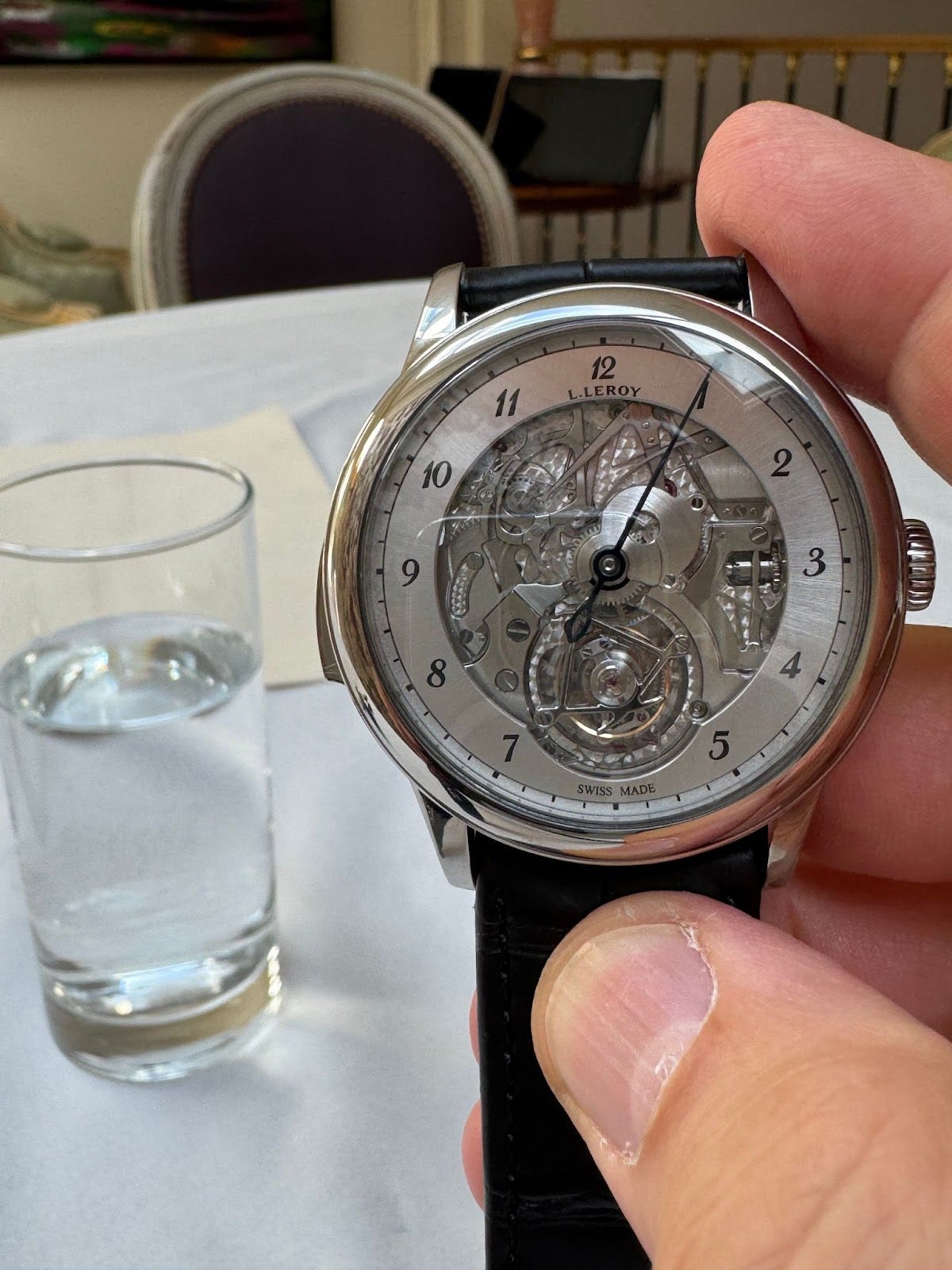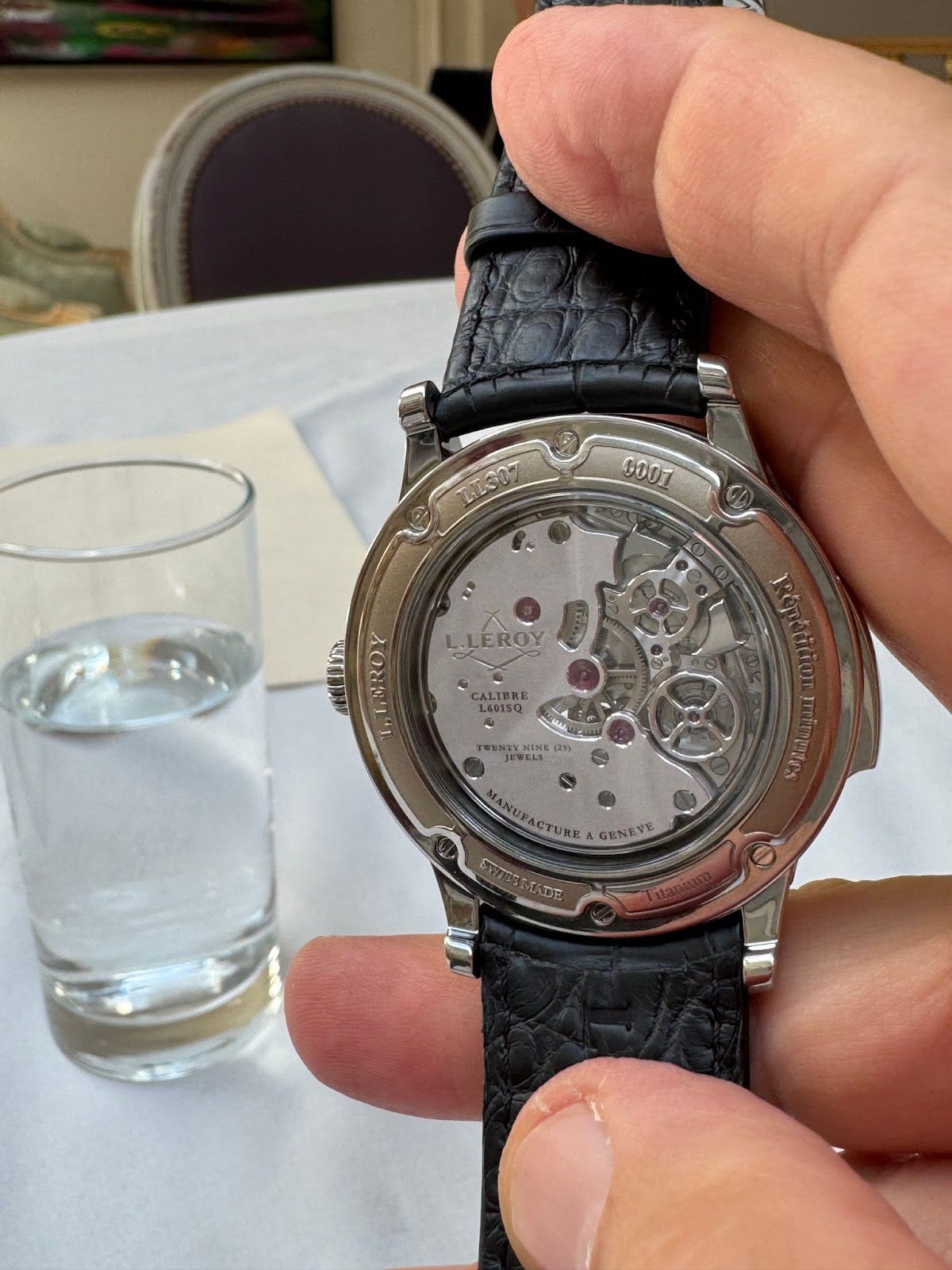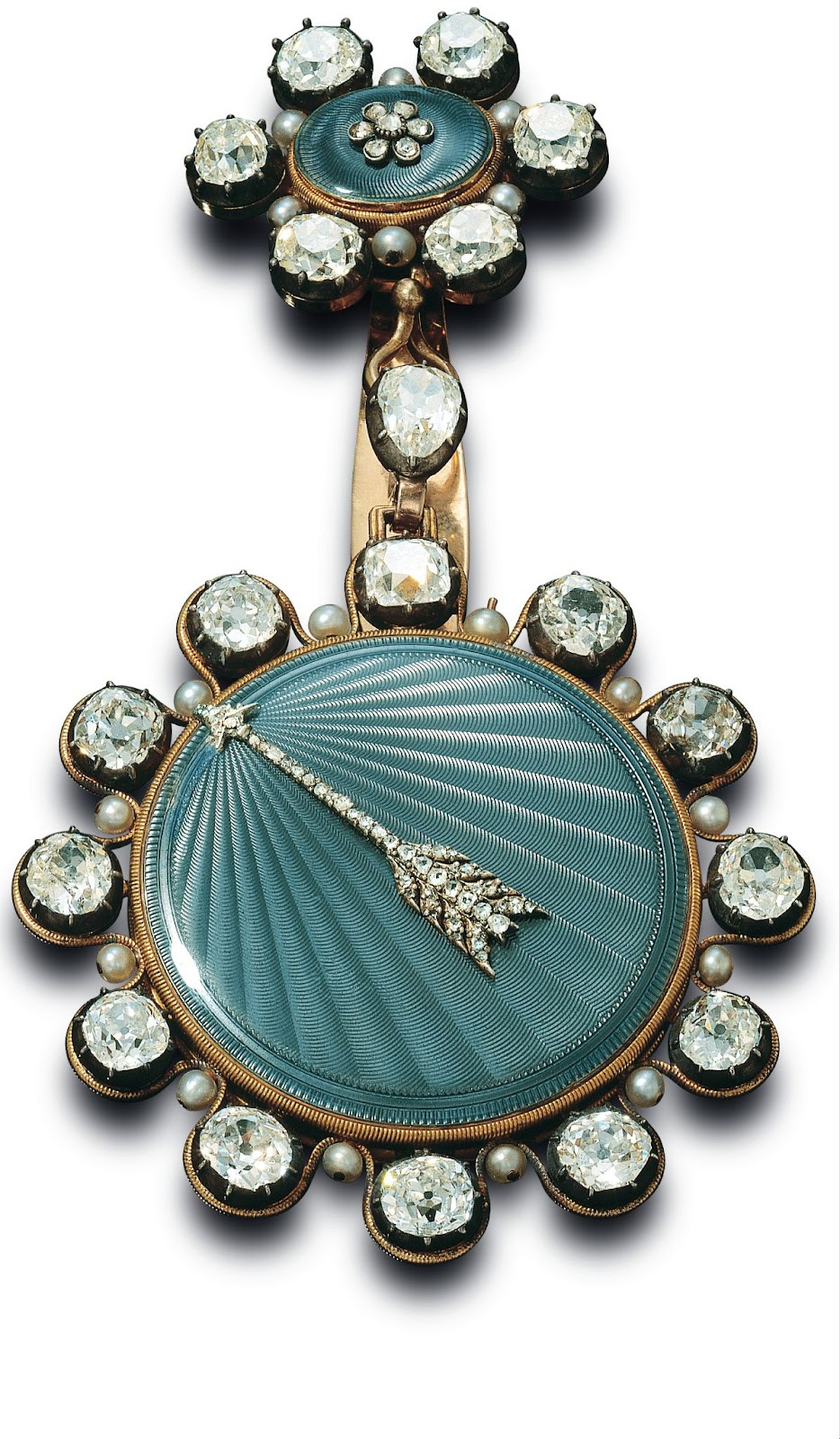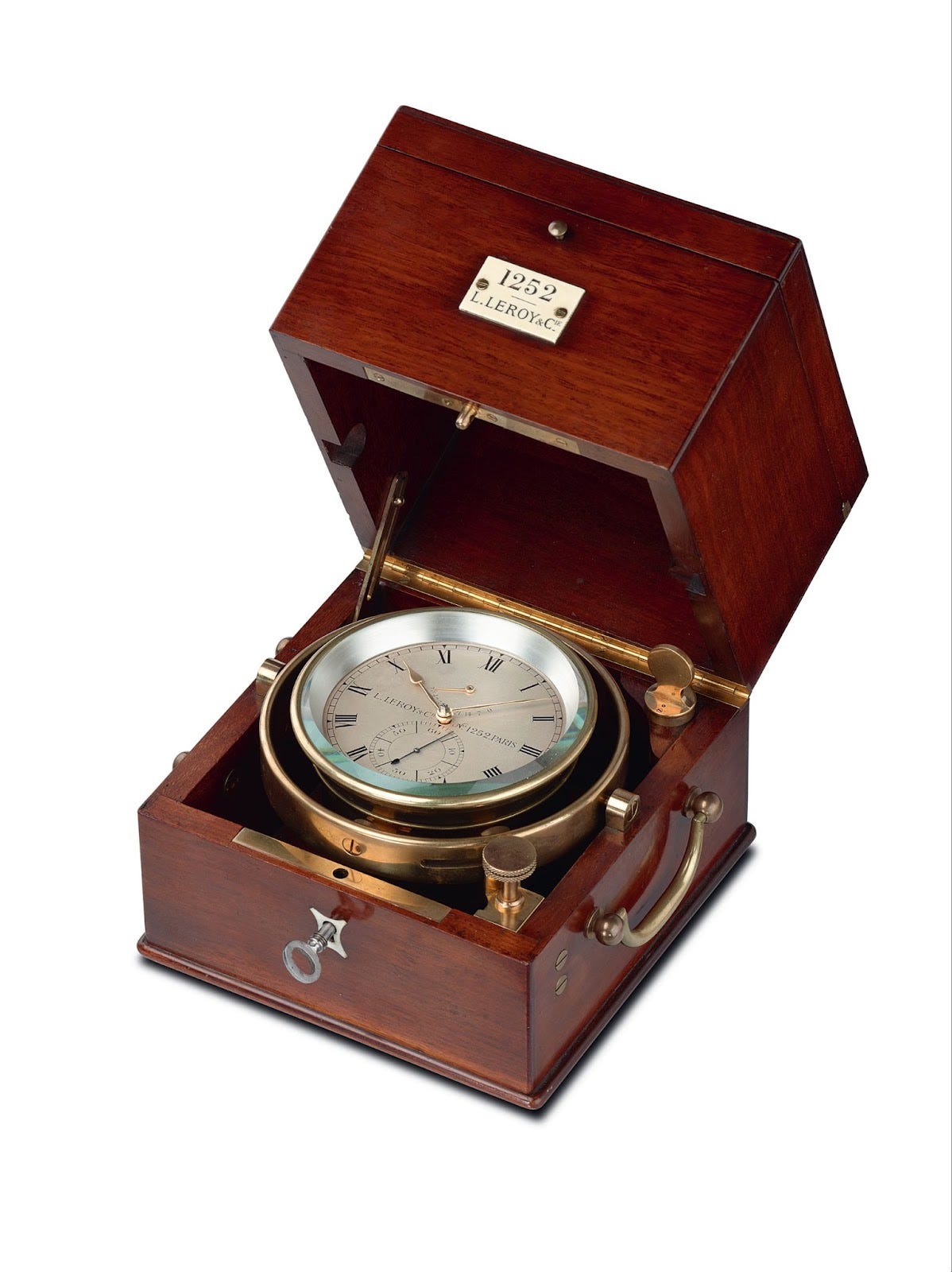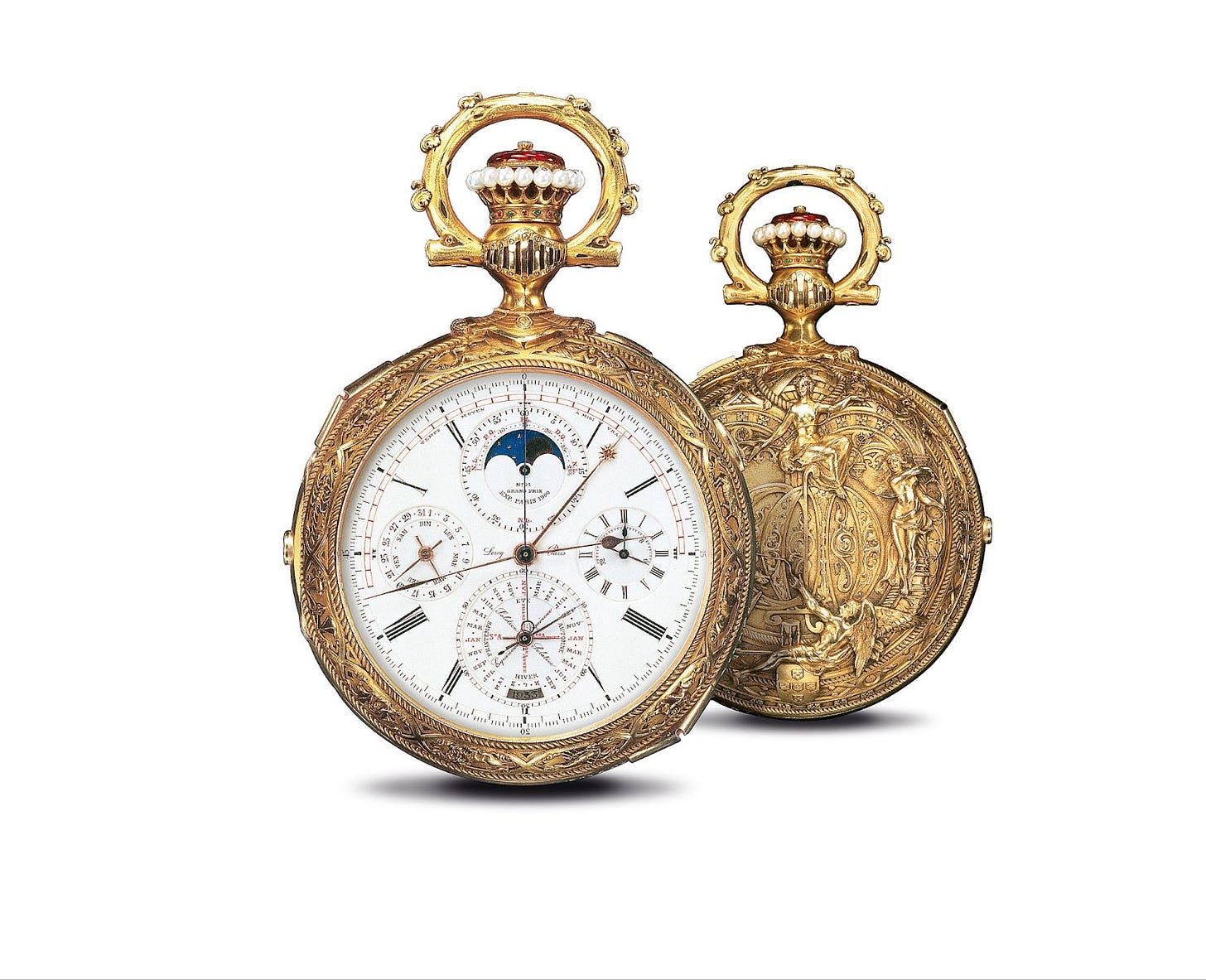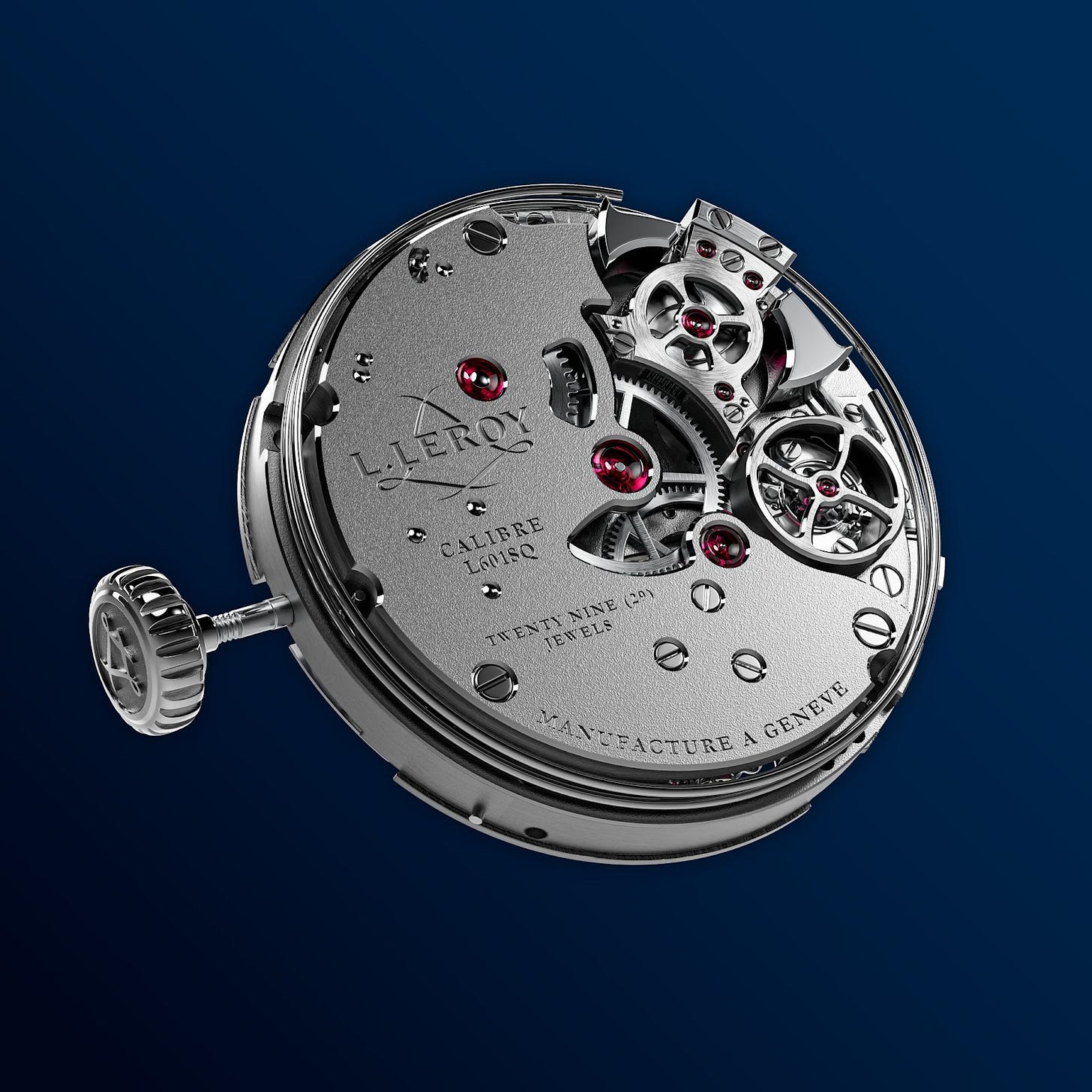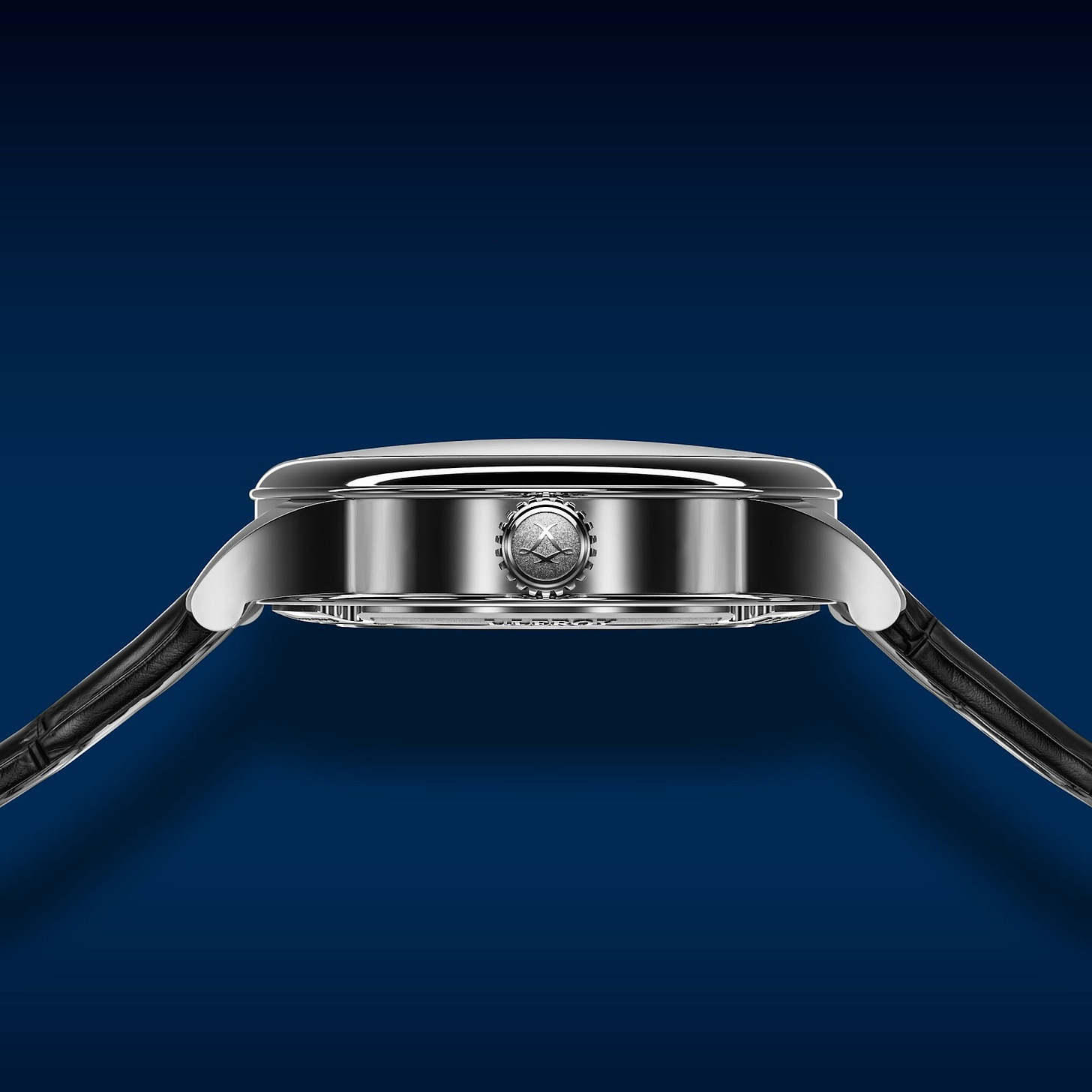The Archaeology of Time: L.Leroy's Bal du Temps
A maison that once measured time for emperors returns with a watch that asks whether we still know how to listen to it.
In Geneva's Hotel Beau Rivage, amid familiar watch presentation choreography, L.Leroy unveils its first production series of the modern era: the Osmior Bal du Temps. Yet this is not merely another resurrection story. History records a curious synchronicity: in 1785, Pierre Le Roy—the chronometer maker who invented the detent escapement and gave us modern marine timekeeping—died heirless, while (Basile)-Charles Le Roy founded the company under the Palais-Royal's arcades. Pierre Le Roy's signature on Basile's apprenticeship contract suggests technical lineage passing from precision chronometry's father to a dynasty that would supply timepieces to emperors. Here lies haute horlogerie's central contradiction: a house that measured court life's cadence now returns to an industry obsessed with perpetual motion, offering a watch demanding we stop and listen.
Contemporary Palimpsest
To understand this contradiction, we must see where L.Leroy sits in today's fragmented haute horlogerie ecosystem. The tourbillon watch market exhibits growing demand for bespoke complications, with collectors seeking unique features and custom designs. L.Leroy occupies peculiar territory—neither fully independent like F.P. Journe nor part of luxury conglomerate machinery. Owned by Miguel Rodriguez of Festina Group, it exists in liminal space between corporate ambition and artisanal authenticity.
Geneva Watch Days attracted 17,000 visitors this year, with participating brands growing from 54 to 66. Within this crowded constellation, the Bal du Temps signals not mere market entry but philosophical statement. While contemporaries chase micro-rotor complications or smartwatch integrations, L.Leroy proposes something more radical: returning to fundamental questions of how time should be experienced rather than simply displayed.
Heritage Claims and Technical Reality
This positioning leads to claims of "240 years of history" shaping "the finest chapters in French watchmaking." The assertion deserves scrutiny. Founded in 1785 by Basile Charles le Roy, the company served illustrious clients: Marie Antoinette, Napoleon, Queen Victoria, Roosevelt, Chopin, Proust, Matisse. Yet the gap between the golden age and contemporary resurrection reveals modern heritage brands' peculiar alchemy.
L.Leroy was acquired in 2004 by Miguel Rodriguez, with executives acknowledging "the watchmaking industry has changed a lot in the last decade." This revival stems less from natural evolution than strategic market calculation.
The craft element deserving genuine appreciation lies not in mythology but legitimate achievement. Beyond royal patronage stands the legendary Leroy 01—created by Louis Leroy in 1900, this 975-component masterpiece with 24 complications remained the world's most complicated watch for 89 years until Patek Philippe's Calibre 89 in 1989. Currently housed in Besançon's Musée du Temps, it represents undeniable horological mastery regardless of surrounding narratives.
Acoustic Ritual in Digital Time
The contemporary L601SQ calibre—321 components, 90-hour power reserve, minute repeater and flying tourbillon in 8.89mm thickness—represents legitimate technical accomplishment. Yet the watch's most radical feature transforms practical innovation into aesthetic performance. The single-hand display requiring acoustic time-telling via minute repeater originally served necessity: "the purpose was to convert time into sound on demand, necessary due to difficulty reading dials in darkness before electricity."
Now this serves precisely opposite functions. In our age of ubiquitous illumination and digital precision, acoustic complications become meditations on obsolescence. The 43mm case in red gold, platinum, or titanium acknowledges this tension between tradition and contemporary sensibility—titanium particularly suggesting awareness that pure heritage worship serves diminishing returns.
Psychology of Mechanical Memory
The Bal du Temps ostensibly offers "prestigious complications" and "unparalleled elegance," but its psychological function operates in more complex territory. The end-user base concentrates among high-net-worth collectors with strong horological appreciation. For this clientele, the watch serves not as a time-telling instrument but as material anchor to pre-digital temporality.
Single-hand display forces particular temporal relationships—privileging approximation over precision, contemplation over efficiency. In contemporary luxury culture, this represents performed resistance to technological acceleration. The collector activating minute repeater at 3:47 PM seeks not temporal information but engages in technological nostalgia ritual, brief escape from smartphones and smartwatches.
This psychological need intersects with broader authenticity anxieties in luxury consumption. L.Leroy's revival participates in a nostalgic legitimacy economy, where historical names are reanimated to provide contemporary products with temporal gravitas.
Mechanical Choreography
The tension between precision and absurdity reaches elegant expression in the watch's central conceit. "Bal du Temps"—literally "Dance of Time"—transforms mechanical duration measurement into choreographed performance. The flying tourbillon at 6 o'clock provides visual rhythm while minute repeater converts temporal data into musical phrases.
The absurdity is evident: a device requiring hundreds of skilled labor hours to announce, through calibrated chimes, information more accurately available from digital sources. Yet this absurdity contains poetry. The collector winding the crown at midnight, feeling 90-hour power reserve engage, participates in ritual connecting them to centuries of human attempts to domesticate time's passage.
Like analog photography or vinyl records, the Bal du Temps asserts value through inconvenience, meaning through inefficiency. Contemporary haute horlogerie increasingly combines artisanal aesthetics with industrial precision, acoustic complications with digital-age materials.
Temporal Architecture
What the Bal du Temps reveals about 2020s watchmaking is the industry's growing comfort with conceptual contradiction. L.Leroy's Geneva Watch Days debut positions it as neither pure independent nor corporate product, but something more ambiguous—heritage name animated by contemporary capital and technical resources, offering complications referencing past while serving entirely contemporary psychological needs.
The watch functions as material archaeology, excavating and preserving ways of experiencing time that digital culture rendered obsolete. Each minute repeater activation becomes temporal tourism, brief visits to pre-digital temporal consciousness. Collectors purchase not tools but organized nostalgia, precision-engineered and Swiss-regulated.
Like Benjamin's concept of constellation, where past and present achieve sudden illumination through unexpected juxtaposition, the Bal du Temps creates temporal architecture where 18th-century court rituals meet 21st-century material science. The titanium case houses complications developed for pre-electric darkness; 90-hour power reserve serves collectors owning dozens of timepieces; flying tourbillon compensates for positional errors in watches spending existence stationary.
L.Leroy's return appears less resurrection than continuation—persistence of human desire to make time tangible, audible, and beautiful, even when such desires serve no practical purpose. The Bal du Temps asks whether we still know how to listen to time's passage, suggesting that the question itself may be more valuable than any answer our devices could provide.



